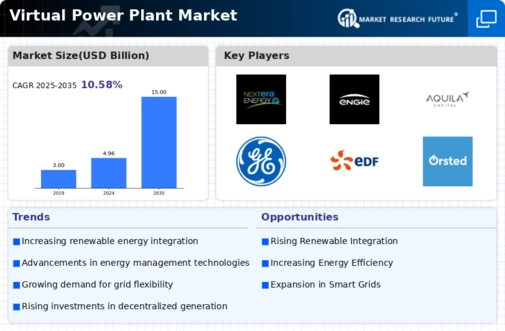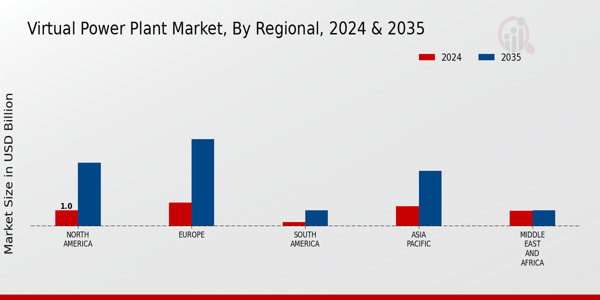The Virtual Power Plant Market is experiencing a dynamic transformation, driven by the escalating demand for renewable energy sources and the need for enhanced grid management.
This market acts as a decentralized network that integrates various distributed energy resources, including solar panels, wind turbines, and energy storage systems.
The competitive landscape is characterized by a diverse range of players, each vying to establish their footprint in this evolving sector. Companies are focusing on innovation, technological advancements, and strategic collaborations to offer integrated energy solutions and optimize energy production.
The growing interest in sustainability and government initiatives advocating renewable energy usage are also influencing competition, resulting in a rapidly changing environment where market participants continually adapt to emerging trends and consumer demands.
NextEra Energy stands out in the Virtual Power Plant Market due to its robust commitment to renewable energy and innovative technology solutions. The company holds a significant market presence, leveraging its extensive experience in operating clean energy facilities across various countries.
One of its main strengths lies in harnessing a diversified energy portfolio that effectively combines solar and wind energy generation, enabling it to maximize efficiency and reliability in energy distribution.
NextEra Energy has consistently focused on technological advancements, investing in smart grid technology and energy management systems that enhance its virtual power plant capabilities.
This focus, combined with a strategic vision for sustainable energy practices, solidifies its position as a leader within this competitive landscape while ensuring resilience against market fluctuations.
Engie, a major player in the Virtual Power Plant Market, possesses a comprehensive suite of products and services designed to optimize energy management and facilitate efficient energy consumption. With a strong global footprint, Engie's market presence extends across numerous regions, making it a key competitor in this space.
The company benefits from its diverse portfolio, which includes renewable energy generation, energy efficiency solutions, and integrated energy services, allowing it to cater to a wide range of customer needs. Engie's strengths also lie in its commitment to innovation and sustainability, pursued through strategic mergers and acquisitions that expand its capabilities and technological expertise.
By continuously investing in next-generation technologies and smart grid solutions, Engie enhances its operational capacity while addressing the rising demand for decentralized energy systems globally.

























Leave a Comment